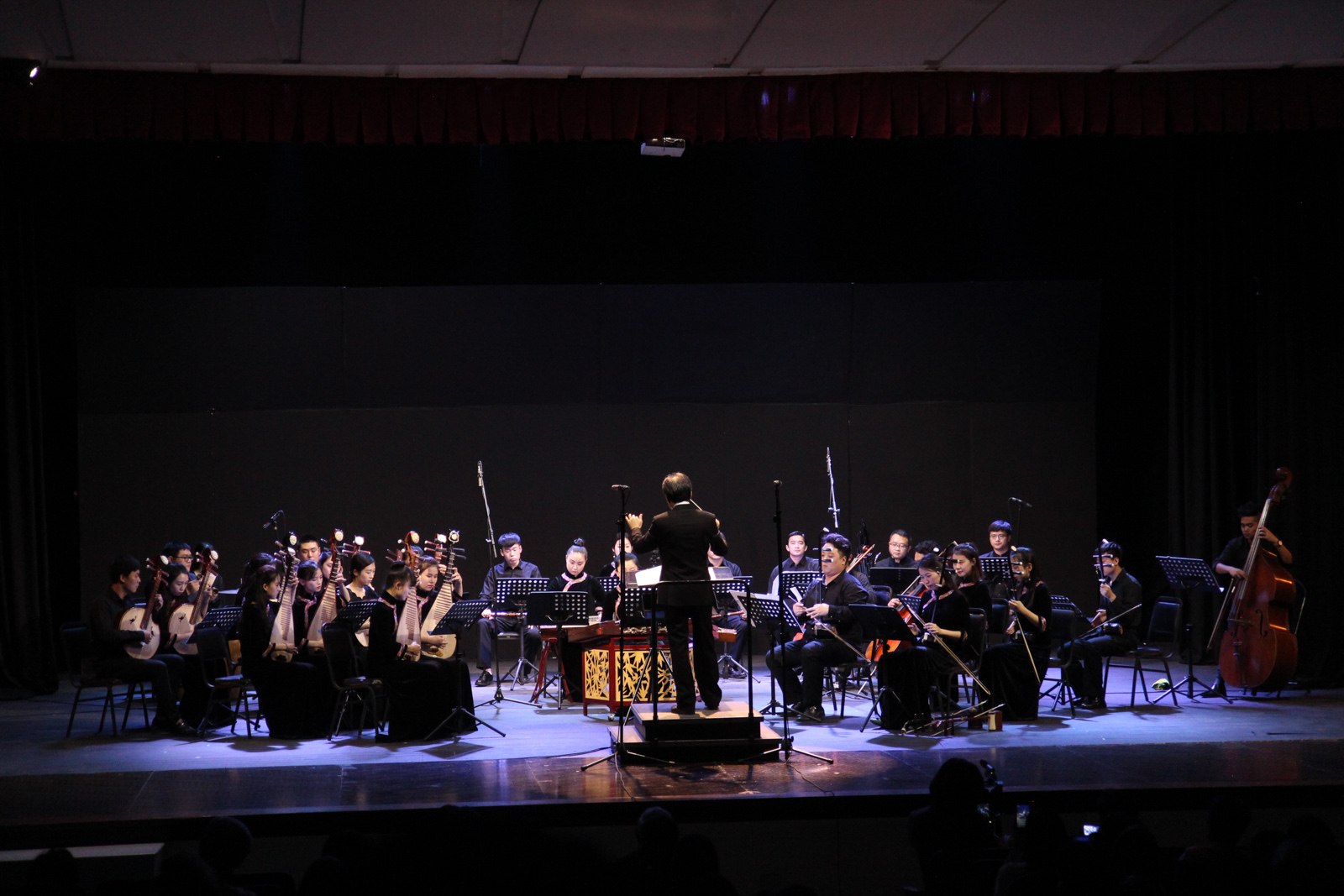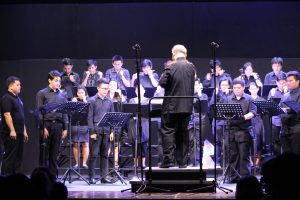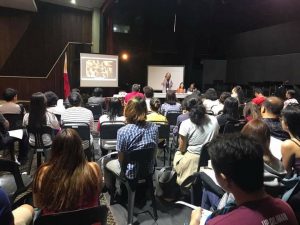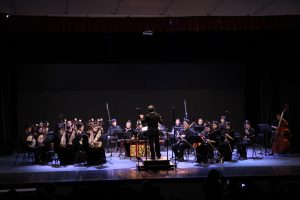There was anticipation in the air last January 31 at the U.P College of Music Abelardo Hall as the closing activities of the year- long celebration of Dr. Jose Maceda’s birthday was celebrated with a concert titled Maceda Retrospective 1952∙1981∙2003. It was a night that ended with a mix of gratification and upsurge of renewed interest in the life and works of the celebrated national artist. A diverse audience gathered to listen to three pieces that represent different points in Dr. Maceda’s life- Scherzino, Aroding and Nanguan. The chosen pieces for the final concert exemplified his vision of integration among opposing musical idioms. Continually reshaping sonic conventions even after his death, Dr. Maceda’s influence as a researcher, philosopher, artist, composer, and ethnomusicologist is still preeminent in those lives he touched.
From January 31, 2017 to January 31, 2018, the U.P Center for Ethnomusicology, with the leadership of its director, Dr. Verne de la Peña, mounted events to pay homage to a man whose scope of impact on Philippine musical and cultural life was unparalleled. The closing activities commenced with pre-concert presentation led by Dr. Ramon Santos and Dr. Jonas Baes, who provided elucidating discussions of Dr. Maceda’s works. The overwhelming attendance was a testament of how people are equally interested in the performance of Dr. Maceda’s music as to knowing the inner workings of his compositional life. The Q&A at the end of the presentation facilitated discourse that examines new questions and readings of Dr. Maceda’s works.
The Pre-Concert Lecture was preceded by Maceda Retrospective 1952∙1981∙2003. The first piece of the concert was Scherzino. Performed by members of Ripieno Ensemble, this 2-movement piece was composed in 1952 for bassoon, piano and clarinet. Modest in length and instrumentation, this seminal work embodies Dr. Maceda’s creative beginnings. The second piece, Aroding for 40 mouth harps, 3 whistle flutes and 5 male voices was composed in 1981. Performed by students and faculty from the U.P College of Music and conducted by Prof. Josefino Toledo, the piece produced envelops of sound that created various geometrical shapes, colors and densities. The final piece was Nanguan, Music for South Chinese Music Instruments performed by the Guangxi Arts University Traditional Orchestra under the baton of Dr. Cai Yang. Composed in 2003, Nanguan was one of Dr. Maceda’s last works. He utilized the Nan-Guan or Nanyi ensemble of South China to produce a contemporary composition that deconstructs the sonic structures of traditional Chinese classical music. It was the premier performance of the piece in the Philippines.
The following day, a lecture-demo was held at the Abelardo Hall stage followed by instrumental master classes. The lecture-demo enabled an intimate encounter with traditional Chinese music for partipants, as faculty members from the Guangxi Arts University provided short performances on the erhu, pipa, gu zheng, and yang qin among many others. Dr. Cai Yang and Zhong Juncheng’s lectures provided historical and social context making it a well-rounded educational experience. Afterwards, a special concert titled Guangxi (Connections) Special Ethnic Chamber Concert was held on the same venue. The Guangxi Arts University Traditional Orchestra’s repertoire was a mix of classical and modern Chinese pieces. With their virtuosic performance, the audience was left enthralled and clamouring for more.
Organizing both concerts was an enormous feat; efforts included gathering more than 80 performers from the U.P College of Music and inviting a traditional Chinese orchestra from Guangxi Arts University. It was, however, unitive and encompassing- as people from different backgrounds, nationalities and sensibilities gathered as performers, audience, teachers, and learners. Forming a community, they shared codes of expressions while rediscovering confluences in each one’s history and tradition.
Dr. Jose Maceda’s birth centenary concludes with a realization of his continued influence on the lives of succeeding generations. His compositions, extensive research work around the Philippines and other parts of Asia, theories and writings, and an examination of his life continue to bring forth in us a consciousness and rootedness in our own tradition.




